February 23, 2018ANALYSIS OF NOVA SCOTIA'S CONSUMER PRICE INDEX FOR JANUARY 2018 In Nova Scotia January 2018, year over year growth for the All-Items Consumer Price Index was 1.4 per cent, below the national average of 1.7 per cent. Monthly consumer prices were up 0.5 per cent in Nova Scotia and up 0.7 per cent in Canada.
Within Atlantic Canada, PEI (+1.6) and New Brunswick (+1.8 per cent) had higher inflation than Nova Scotia. Newfoundland and Labrador saw a 1.1 per cent increase in prices.
All other provinces experienced positive year over year inflation in January.
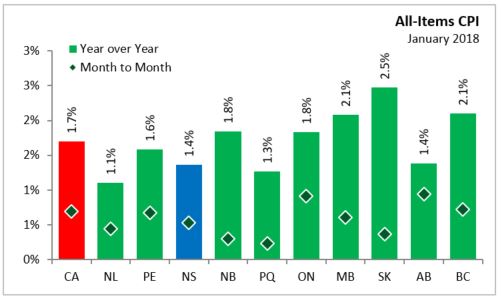
Nova Scotia's annual consumer price inflation (year over year growth in CPI) excluding food and energy rose 1.3 per cent in January, below the national rate of 1.5 per cent. Price level gains for this index were largest in Saskatchewan (+2.3 per cent) and New Brunswick and BC (both +2.0 per cent), and lowest in Quebec (+0.9 per cent). On a monthly basis, Nova Scotia's index excluding food and energy was up 0.2 per cent.
The main contributors to the monthly (January 2018 vs. December 2017) NS CPI movement:
Fresh fruit (+10.5%)
Fuel oil and other fuels (+6.4%)
Recreational equipment and services (excluding recreational vehicles) (-5.2%)
Preserved vegetables and vegetable preparations (-8.2%)
The main contributors to the annual (January 2018 vs. January 2017) NS CPI movement:
Inter-city transportation (+12.4%)
Fuel oil and other fuels (+9.8%)
Recreational equipment and services (excluding recreational vehicles) (-7.9%)
Preserved vegetables and vegetable preparations (-11.3%)
The CPI for food in Nova Scotia increased 0.3 per cent year-over-year with a 0.1 per cent decrease month-over-month. CPI growth in food (year over year) was up in all provinces except PEI. Nationally, annual food prices increased 2.3 per cent.
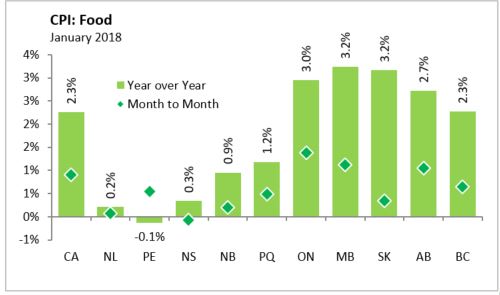
The Nova Scotia energy index increased by 3.8 per cent compared to a year ago. Energy price growth was smallest in Newfoundland and Labrador on a year over year basis (-0.7%) and largest in Quebec (+4.9%). Nationally, the index was up 2.4 per cent.
Major Components for January 2018
The following table shows the price increases specific to Nova Scotia for the major components of the CPI this month:
Long Run Trends
The All-Items CPI year over year inflation rate for Nova Scotia was below Canada's in January 2018. Since June 2014, Nova Scotia's annual inflation has been below the Canadian average except for three months in 2016: January, September and November. While month to month movements in the indices can be different, over time they generally follow the same overall trend.
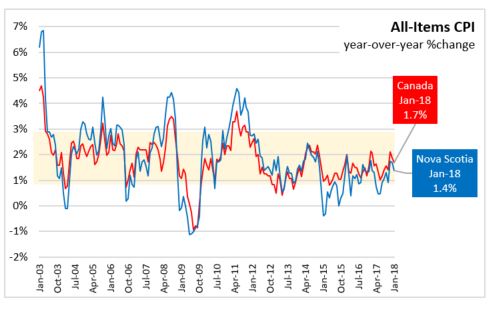
Annual inflation for the CPI excluding food and energy was lower for Nova Scotia (+1.3 per cent) than for Canada (+1.5 per cent).
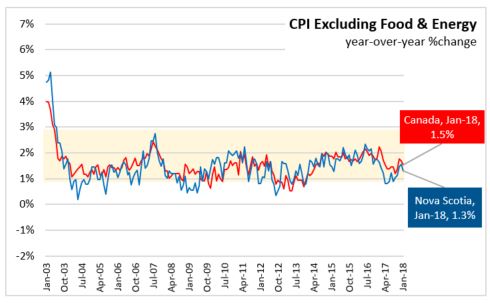
Bank of Canada's preferred measures of core inflation
Compared with January 2017, CPI-Common rose 1.8 per cent, CPI-Median rose 1.9 per cent, and CPI-Trim rose 1.8 per cent in Canada. All-items CPI excluding eight of the most volatile components as defined by the Bank of Canada and excluding the effect of changes in indirect taxes (formerly referred to as CPIX) rose 1.2 per cent year over year in January 2018.
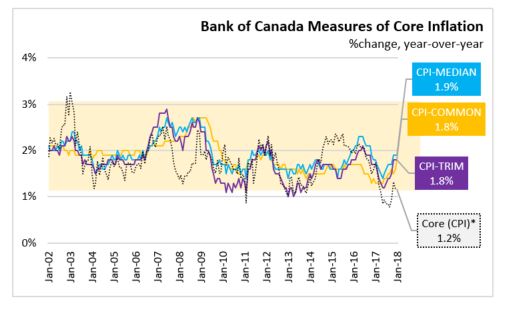
Appendix Tables and Charts

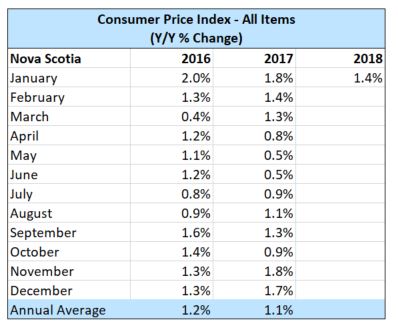
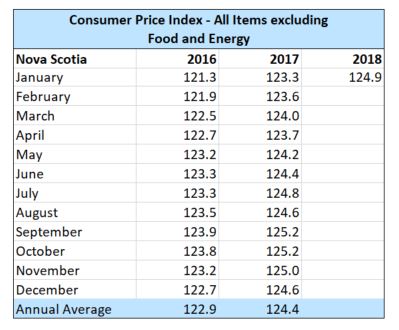
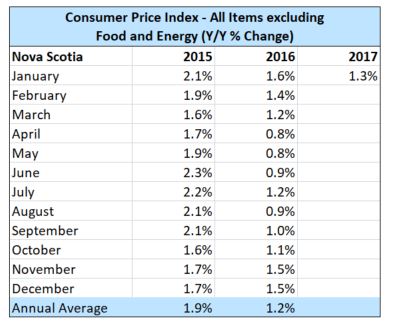
Source: Statistics Canada CANSIM Tables 326-0020 , 326-0023